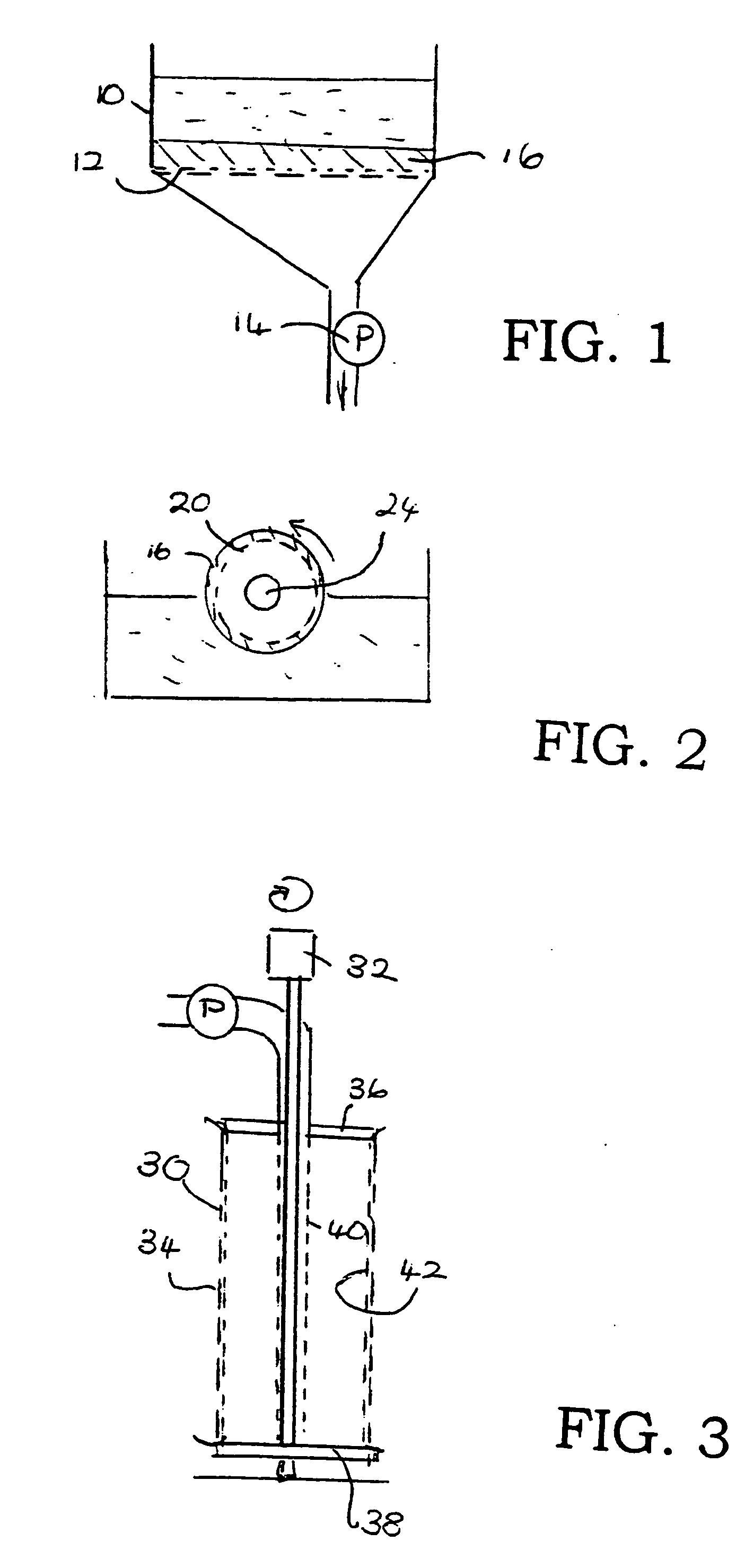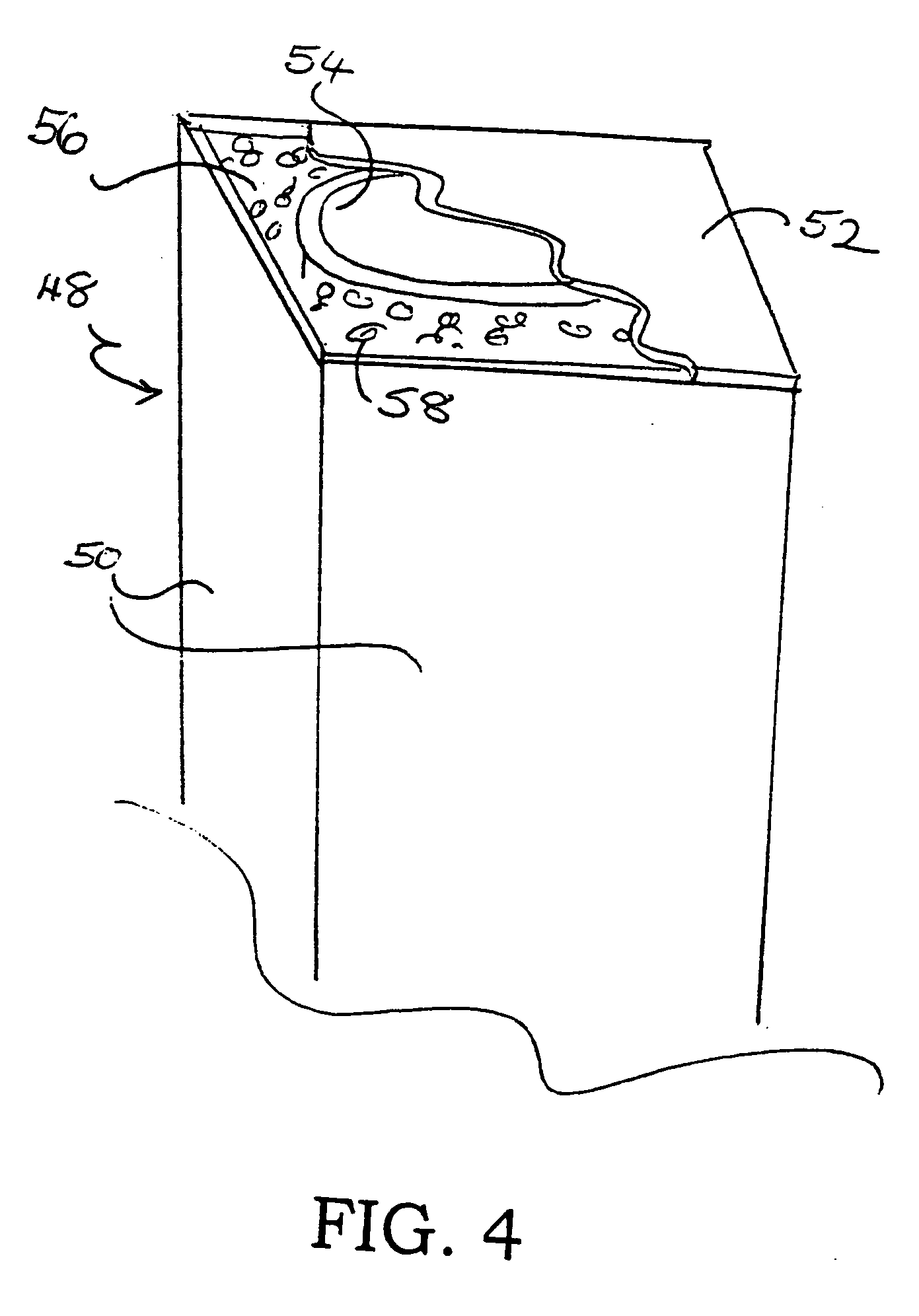Isotropic pitch-based materials for thermal insulation
a technology of isotropic pitch and thermal insulation, which is applied in the direction of furniture, lighting and heating equipment, transportation and packaging, etc., can solve the problems of phenolic resin solutions, environmental problems, and material formation from conventional fibers, and achieves low thermal conductivity, fewer disposal problems, and high flexural strength.
- Summary
- Abstract
- Description
- Claims
- Application Information
AI Technical Summary
Benefits of technology
Problems solved by technology
Method used
Image
Examples
example 1
[0045] Carbon fibers derived from either rayon, cotton, or isotropic pitch were used as the reinforcement material. The isotropic pitch carbon fibers were obtained from AnShan Chemical Co., China in three grade forms, P-400, P-600, and P-800, with the number designating the average length of the fibers in microns. The rayon fibers were produced by carbonizing raw rayon fibers to a temperature of about 800° C. and milling the carbonized fibers to an average length of about 300 microns. Solutions of cane sugar were prepared with concentrations ranging from 27-60%.
[0046] Slurries of fiber and sugar solution were filtered through a 12 cm diameter ceramic filter funnel fitted with a filter cloth. The funnel was attached to a tap water faucet providing a vacuum source. The binder was pulled into a flask below the funnel. Extraction was ended when the binder ceased to drip into the flask. The extracted disks were heated to 250° C. to remove residual water and convert the sugar to an infus...
example 2
[0049] Insulation material prepared as large sheets suitable for furnace lining and the like were compared with a competitor's commercial insulation material formed from rayon fibers and phenolic resin binder. TABLE 2 shows that the isotropic pitch fiber / sugar-based composition had good strength and low ash content. The low density product had higher strength (flexural and compressive) than a commercial product of comparable density.
TABLE 2InsulationInsulationMaterialMaterialprepared byprepared bypresentpresentCompetitor'sprocess (“Lowprocess (“HighCommercialProductDensity”)Density”)ProductFillerIsotropic pitchIsotropic pitchRayon fibersfibersfibersFiber weight % 85Not knownAverage fiber 1.2 1.2(1.4)length, mmBinderSugarSugarPhenolic ResinDensity, g / cm3 0.19 0.270.16 (0.17 ±0.02)Specific Resistance,WG 719WG 558WG 1179 (1100)□□mAG 5272AG 1476AG 4178 (4070)Flexural strength,WG 273WG 383WG 140 (149)psiAG 28AG 88AG 29 (22)CompressiveWG 220WG 418WG 109 (160)strength, psiAG 185AG 188AG ...
example 3
[0050] Properties were measured during forming of isotropic pitch / sugar sheet products using a 60% sugar binder and compared with an equivalent product formed using a 27% sugar binder. TABLE 3 lists the results obtained.
TABLE 3SugarGreenBinderCureCalculatedDensity afterdensity,Content,density,bindercarbonization,g / cm3w / og / cm3Content, w / og / cm360%0.37510.31230.27sugar27%0.28230.2570.24sugar
PUM
| Property | Measurement | Unit |
|---|---|---|
| Temperature | aaaaa | aaaaa |
| Length | aaaaa | aaaaa |
| Fraction | aaaaa | aaaaa |
Abstract
Description
Claims
Application Information
 Login to View More
Login to View More - R&D
- Intellectual Property
- Life Sciences
- Materials
- Tech Scout
- Unparalleled Data Quality
- Higher Quality Content
- 60% Fewer Hallucinations
Browse by: Latest US Patents, China's latest patents, Technical Efficacy Thesaurus, Application Domain, Technology Topic, Popular Technical Reports.
© 2025 PatSnap. All rights reserved.Legal|Privacy policy|Modern Slavery Act Transparency Statement|Sitemap|About US| Contact US: help@patsnap.com


